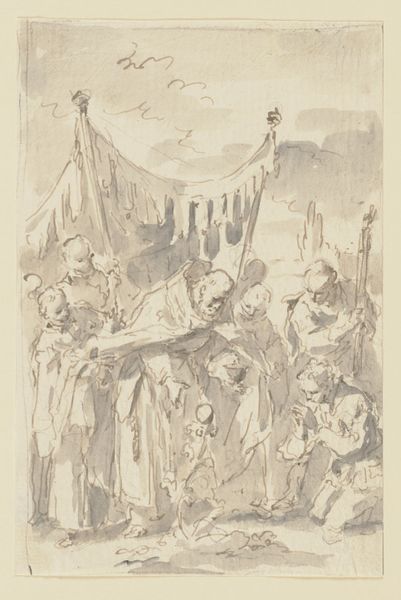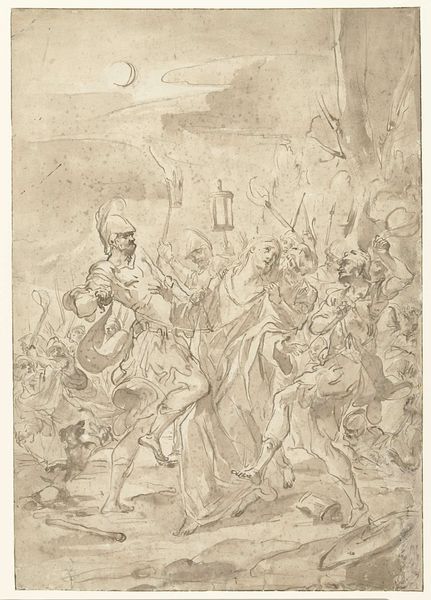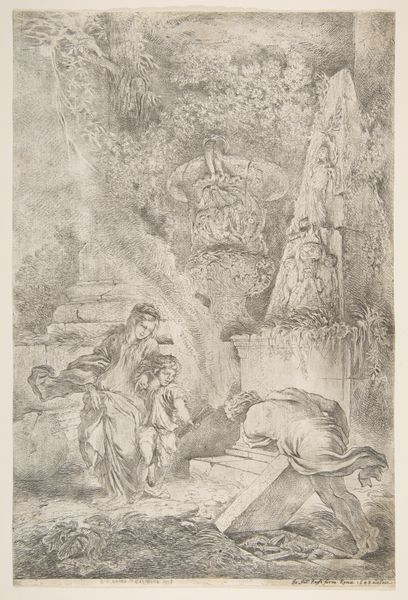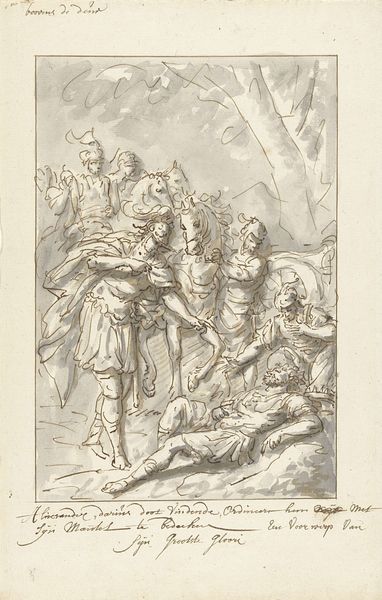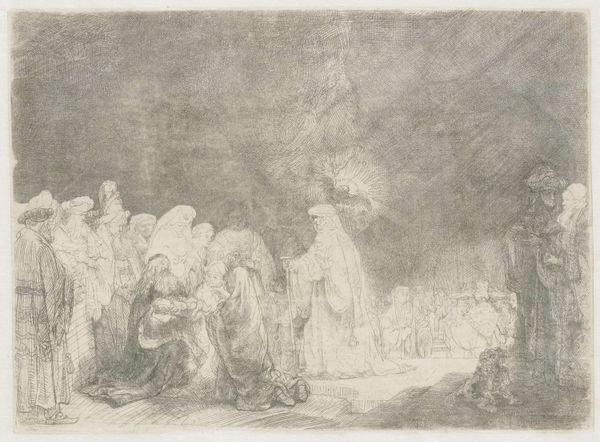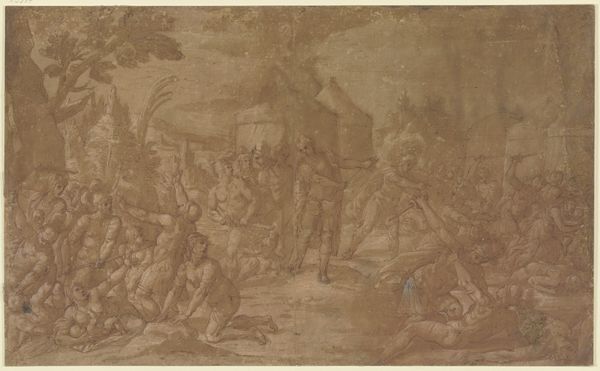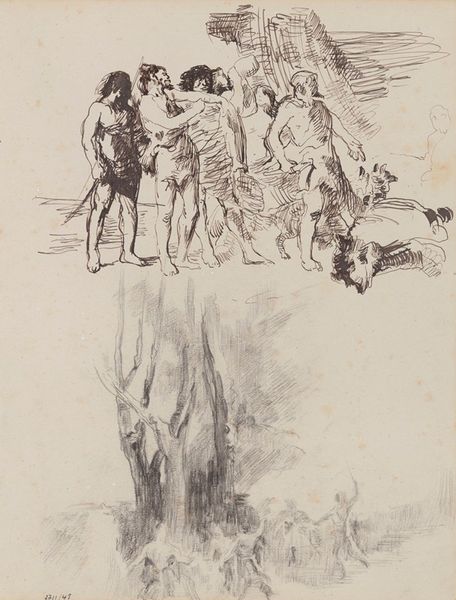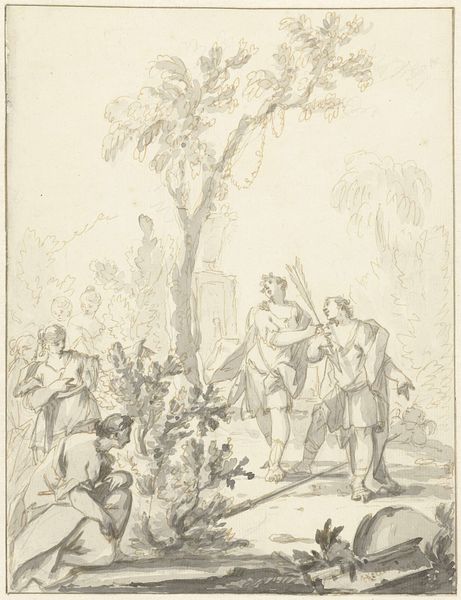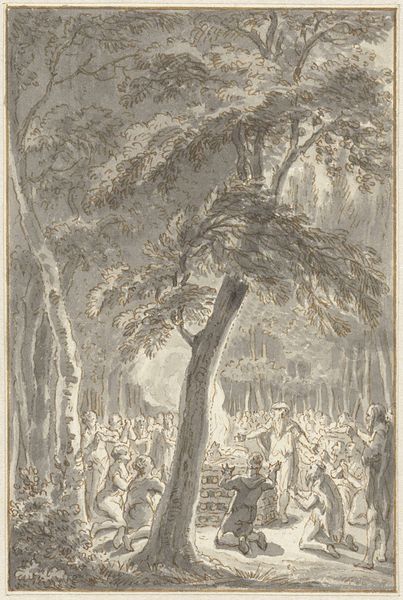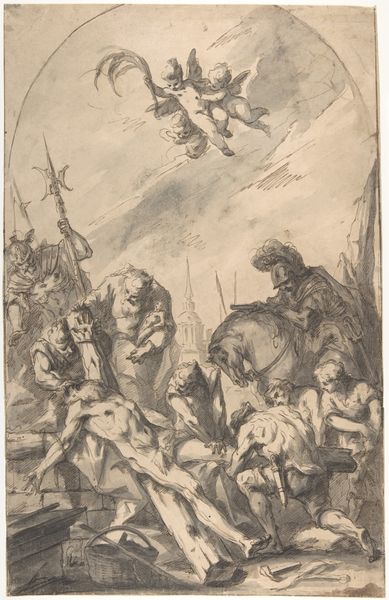
drawing, ink, pen
#
drawing
#
narrative-art
#
baroque
#
figuration
#
ink
#
pen
#
history-painting
Dimensions: height 339 mm, width 288 mm
Copyright: Rijks Museum: Open Domain
Editor: This is Jan Victors' "Offering of Abigail," created with pen and ink around 1635 to 1640. The composition is incredibly dense; it almost feels like I'm peering into a crowded, bustling scene. How do you interpret this work, especially considering its historical context? Curator: It’s tempting to see this drawing as a straightforward biblical illustration, and in some ways it is, but let’s also consider the power dynamics on display. Abigail, a woman, is offering gifts to David, who would become King. Victors, situated in 17th-century Holland, invites us to contemplate women's roles in negotiating power – think about the constraints they faced, and how this narrative might offer a veiled commentary on the artist’s contemporary society. Does Abigail have any agency here? Editor: That’s a great point. I hadn’t thought about it in terms of gendered power dynamics. Her posture does seem submissive, and she is surrounded by all these men in arms… Was Victors aware of this subtext, do you think, or is this more of a modern interpretation? Curator: It's likely layered. Victors, working within a patriarchal society, may have been both reflecting and subtly questioning these dynamics. Ask yourself: how does his representation of Abigail both uphold and perhaps critique the conventional role of women in positions of negotiation and power? Are we seeing submission or a carefully constructed performance of it? Editor: So, beyond just illustrating a Bible story, Victors might be engaging in a quiet form of social commentary. It’s incredible how much complexity can be packed into a pen-and-ink drawing! Curator: Exactly! And that tension is precisely what makes this work so compelling centuries later. It prompts us to confront historical power structures and question their echoes in our own time. Editor: I will definitely view artworks through the lens of gender and power more actively now! Curator: Wonderful! Keep asking those questions. Art history should never shy away from contemporary theory.
Comments
No comments
Be the first to comment and join the conversation on the ultimate creative platform.
